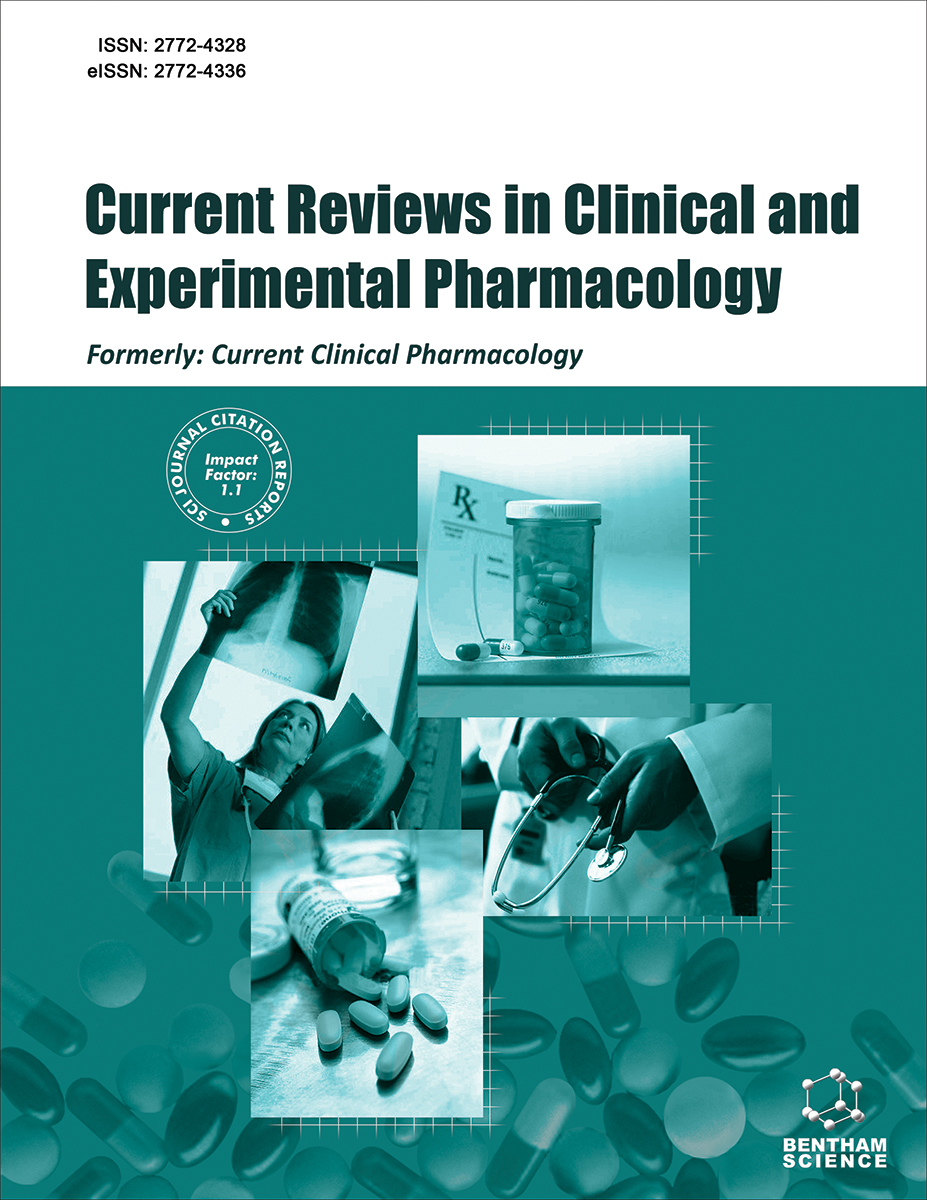- Home
- A-Z Publications
- Current Reviews in Clinical and Experimental Pharmacology
- Previous Issues
- Volume 19, Issue 4, 2024
Current Reviews in Clinical and Experimental Pharmacology - Volume 19, Issue 4, 2024
Volume 19, Issue 4, 2024
-
-
Zebrafish Experimental Animal Models for AD: A Comprehensive Review
More LessAuthors: Ruksar Sande, Angel Godad and Gaurav DoshiAD disease (AD) is a multifaceted and intricate neurodegenerative disorder characterized by intracellular neurofibrillary tangle (NFT) formation and the excessive production and deposition of Aβ senile plaques. While transgenic AD models have been found instrumental in unravelling AD pathogenesis, they involve cost and time constraints during the preclinical phase. Zebrafish, owing to their simplicity, well-defined behav Read More
-
-
-
Berberine: A Multi-Target Natural PCSK9 Inhibitor with the Potential to Treat Diabetes, Alzheimer’s, Cancer and Cardiovascular Disease
More LessBerberine is a natural product with a wide range of pharmacological effects. It has antimicrobial, anti-cancer, anti-inflammatory, anti-hyperlipidemic, neuroprotective, and cholesterollowering properties, among others. It has been used in traditional Chinese and Ayurvedic medicine for 3000 years and is generally well-tolerated with few side effects. Its main drawback is low oral bioavailability, which has hindered wide Read More
-
-
-
Insights into the Therapeutic and Pharmacological Properties of Resveratrol as a Nutraceutical Antioxidant Polyphenol in Health Promotion and Disease Prevention
More LessAuthors: Shiva Mohammadi, Maryam D. Moghadam, Maryam Nasiriasl, Morteza Akhzari and Mahdi BarazeshResveratrol (3, 5, 4′128;trihydroxystilbene) is a polyphenolic derivative with herbal origin. It has attracted considerable attention in recent decades. Many studies have revealed the benefits of Resveratrol over several human disease models, including heart and neurological diseases, nephroprotective, immune regulation, antidiabetic, anti-obesity, age128;related diseases, antiviral, and anticancer in experimental and Read More
-
-
-
Advanced Therapeutic Medicinal Products in Bone and Cartilage Defects
More LessThe number of patients with functional loss of bone and cartilage tissue has shown an increasing trend. Insufficient or inappropriate conventional treatments applied for trauma, orthopedic diseases, or other bone and cartilage-related disorders can lead to bone and cartilage damage. This represents a worldwide public health issue and a significant economic burden. Advanced therapeutic medicinal products (ATMPs) propos Read More
-
-
-
The Application of Kinesin Inhibitors in Medical Issues
More LessAuthors: Mojgan Nejabat, Farzin Hadizadeh and Amirhossein SahebkarKinesins are a group of motor proteins in charge of several crucial functions in the cell. These proteins often bind to microtubules and perform their functions using the energy produced by ATP hydrolysis. One function of mitotic kinesin, a subclass of kinesin that is expressed during cell division at the mitotic phase, is to create the mitotic spindle. Uncontrolled cell growth is one trait of cancerous cells. Traditional anticancer medicati Read More
-
-
-
Mechanistic Insight into the Role of Peptides Secreted from Bacillus clausii and Future Opportunities
More LessAuthors: Jyoti Guleria and Minhaj A. KhanBacillus clausii is a commercial spore probiotic known to treat multiple diseases. An increased interest in exploring the nutraceutical and probiotic properties of various microorganisms has made researchers explore more about these bacteria. The current trends in the healthcare industry are majorly focused on devising new therapies to avoid drug and pathogen resistance in patients. Antimicrobial peptides have been consider Read More
-
Most Read This Month
Article
content/journals/crcep
Journal
10
5
false
en


